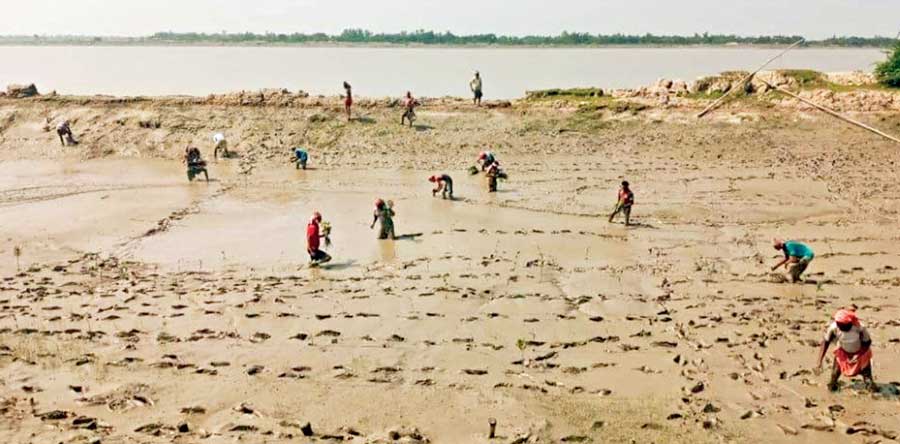Barely 48 hours ahead of the expected landfall of Cyclone Yaas on Wednesday, people living in the Sunderbans region feel unprotected owing to the damage that Cyclone Amphan had caused to their first guard wall or the mangrove forest last year in May.
After the ravages caused by Amphan, the state forest department and many non-governmental organisations had joined hands to undertake a plantation programme and around five crore mangrove trees were planted over months. But before these trees could grow big enough to protect the region, the threat of a fresh cyclone, Yaas, has come to haunt a large section of people who live in the region.
People living in Amphan-battered Hingalganj and Sandeshkhali of North 24-Parganas and Namkhana, Patharpratima, Kultali, and Gosaba of South 24-Parganas fear that the impact of Yaas on their lives would be worse this time because of the breach in the mangrove forest.
A post-Amphan damage assessment done by the state forest department had claimed that around three lakh dominant mangrove trees like kalo bain, peyara bain, hargoja, kewra, geoan, garan, and sundari were uprooted as the super cyclone wreaked havoc during its landfall in the region.
Mangrove is a group of plants that grows in saline or brackish water and play an important role in maintaining water quality.
With their dense network of roots and surrounding vegetation, they filter and trap sediments, heavy metals, and other pollutants and at the same time help prevent erosion of river banks.
“The damage to the Sunderbans mangrove caused by Cyclone Amphan last year left us literally unguarded. It always becomes the first guard wall to protect us from cyclones. A huge number of trees was uprooted in the region last year when Amphan struck, but nevertheless, the presence of the trees had minimised the devastation. This guard wall is missing this time. New mangrove trees planted by the government and other agencies are too young to protect us,” said Pradip Naskar, a resident of Namkhana.
The BDO of Namkhana, Santanu Sinha Thakur, admitted that the fear of the villagers was not unfounded.
“The decrease in the number of mangrove trees will definitely deepen the impact of the cyclone. The big trees work as guard walls, but this protection has been weakened by Amphan,” he said.
According to the assessment of the state government, as much as 4,263sqkm of the 9,630sqkm mangrove forest had been damaged during last year’s Amphan.
Pradipta Sarkar, a member of Paschimbanga Vigyan Mancha, said: “Repeated incidents of cyclone have damaged mangroves in the Sunderbans in a large way. A large number of trees have also been lost because of illegal felling. Restorative plantation would be of no use if we have repeated instances of cyclones in such short intervals (like Amphan and Yaas). Trees need time to grow.”
State forest minister Jyotipriya Mullick on Monday held a meeting with his officials and advised them to undertake proper assessment of the possible loss to the mangrove forests.
“We had undertaken a massive plantation drive after Amphan. But many of these trees would be damaged this time. We have to take up fresh plantation drive once the cyclone ends,” a senior forest department official said.










